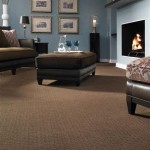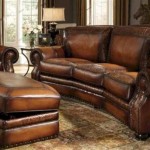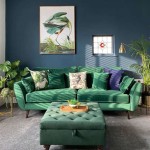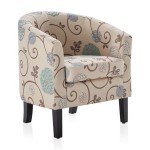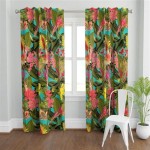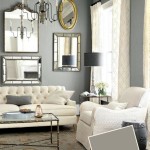Living Room Furniture Choices for Compact Apartments
Furnishing a small apartment living room presents a unique set of challenges. Space is premium, and the furniture choices must maximize functionality without overwhelming the area. Selecting the right furniture requires careful consideration of dimensions, style, and multi-purpose designs. This article will explore key aspects of choosing living room furniture tailored specifically for small apartments, focusing on space-saving solutions and design principles that create a comfortable and aesthetically pleasing environment.
Prioritizing Multi-Functional Furniture
In a small apartment, every piece of furniture should ideally serve more than one purpose. This approach maximizes the utility of the available space and reduces the need for multiple individual items. Multi-functional furniture can transform the living room from a daytime lounge to a nighttime guest room or storage hub.
Sofa beds are a classic example of multi-functional furniture. During the day, they function as a comfortable seating area, and at night, they can be easily converted into a bed for guests. Newer models come with improved mattress quality and ease of use, making them a more comfortable and practical option than older versions. When selecting a sofa bed, consider the dimensions of the sofa both when it is in its sofa configuration and when it is fully extended as a bed. Measure the available space carefully to ensure that it fits comfortably without obstructing walkways or doorways.
Storage ottomans offer another excellent multi-functional solution. These pieces can serve as footrests, coffee tables, and hidden storage compartments. They are ideal for storing blankets, pillows, books, or even electronic devices. Some ottomans can also be used as extra seating when needed. Look for ottomans with sturdy construction and durable fabric to ensure they can withstand regular use.
Coffee tables with lift-top mechanisms are also valuable in small spaces. These tables allow users to lift the top surface, providing a convenient workspace or dining surface. The space beneath the lifting top can be used for storing laptops, magazines, or other items. Choose a lift-top coffee table that is the appropriate height and size for the sofa and the overall room proportions.
Wall-mounted shelves and cabinets are also considered multi-functional in certain situations. They function for storage and for decorating a room with decorative lighting, plants, books or art. Wall-mounted shelves utilize vertical space, preventing the room from getting too crowded while providing a place to store various items.
Optimizing Space with Size and Layout
The size and layout of furniture are crucial considerations when designing a small living room. Overly large or bulky furniture can make the space feel cramped and uncomfortable. Choosing pieces that are appropriately scaled to the room's dimensions is essential for creating a sense of spaciousness and flow.
When selecting a sofa, consider a loveseat or a smaller sectional instead of a full-sized sofa. Loveseats provide comfortable seating for two people without taking up as much floor space. Smaller sectionals can offer more seating flexibility while still fitting into a compact area. Pay attention to the depth and height of the sofa to ensure it does not overwhelm the room. Sofas with exposed legs tend to create a lighter and more open feel compared to those with solid bases.
Coffee tables should be proportionate to the sofa and the overall room size. Avoid large, bulky coffee tables that take up too much space. Instead, opt for smaller, more streamlined designs or consider using nesting tables that can be easily stored when not in use. Glass-topped coffee tables can also create a sense of openness and lightness in the room.
Instead of traditional bulky entertainment centers, consider using wall-mounted shelves or floating cabinets to house the television and media components. This approach saves floor space and creates a cleaner, more modern look. Ensure that the shelves or cabinets are securely mounted and can support the weight of the electronic devices.
Rugs can define a seating area with a small living room. A rug can help tie together the furniture arrangement and create a focal point within the space. Select a rug that is appropriately sized for the seating area and complements the color scheme of the room. A rug can also serve to protect the flooring underneath.
Strategic Use of Color and Light
Color and light play a significant role in how a small space is perceived. Lighter colors tend to make a room feel more open and airy, while darker colors can make it feel smaller and more enclosed. Maximizing natural light and incorporating artificial light sources strategically can also enhance the sense of spaciousness.
When selecting furniture, opt for lighter colors and neutral tones. Light-colored sofas, chairs, and tables will reflect light and create a brighter, more open feel. Avoid dark or overly bold colors, as they can make the room feel smaller and more cramped. If desired, use pops of color strategically through accessories such as throw pillows, blankets, or artwork.
Maximize natural light by keeping windows uncovered or using sheer curtains that allow light to filter through. Avoid heavy drapes or blinds that block natural light. Mirrors can also be used to reflect light and create the illusion of more space. Place mirrors strategically to reflect windows or other light sources.
Incorporate a variety of artificial light sources to brighten up the room, especially in areas that do not receive much natural light. Use a combination of overhead lighting, table lamps, and floor lamps to create a well-lit and inviting atmosphere. Consider using dimmable lights to adjust the brightness according to the mood and time of day.
A well-placed floor lamp can provide both ambient and task lighting, making it a versatile addition to a small living room. Choose a floor lamp with a slender design that does not take up too much space. Table lamps can be used on side tables or shelves to add a warm and inviting glow. Make sure the lampshades are appropriately sized for the lamps and complement the overall style of the room.
Adding artwork with light colors will also brighten the colors of the room. Furthermore, adding plants can add color to the room and can add a natural lighting quality when placed near sunlight.
In summary, furnishing a small apartment living room requires a thoughtful approach that prioritizes functionality, space optimization, and strategic use of color and light. By selecting multi-functional furniture, carefully considering the size and layout of the pieces, and utilizing lighter colors and ample lighting, it is possible to create a comfortable and stylish living space that maximizes the available area.
:max_bytes(150000):strip_icc()/rsw984h656-d6d00a18536d4afc8b48c0da03702ea7.jpeg?strip=all)
40 Small Apartment Living Room Ideas To Maximize Space And Style

Cozy Small Apartment Ideas For Your Home Designcafe

10 Creative Ways To Arrange Furniture In A Small Living Room

25 Small Living Room Ideas To Maximize Your Space

25 Small Apartment Living Room Ideas For A Cozy Home Makeover
:max_bytes(150000):strip_icc()/105-62e30454bc064db0a9014a53c18321e1-4c36e86edfad4a49b6c78adc96e0995d.jpeg?strip=all)
40 Small Apartment Living Room Ideas To Maximize Space And Style

Decorating A Small Living Room Wall Colors Furniture And More

Making Over My Brother S Small Apartment Living Room Within The Grove

7 Apartment Decorating And Small Living Room Ideas The Anastasia Co

17 Small Living Room Ideas To Maximize Your Space Spacejoy


